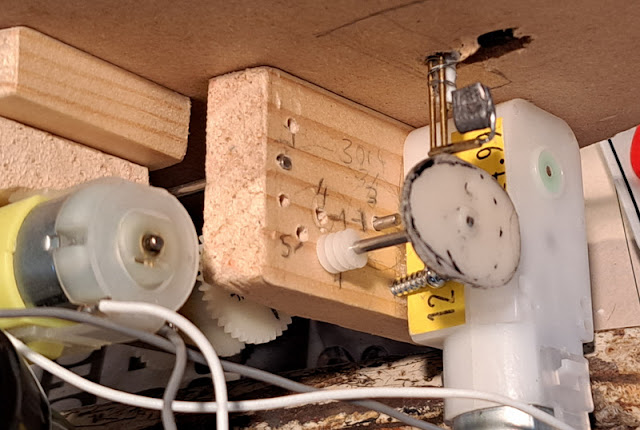I have modelled Hexworthy on the bank of the river Dart, and so not only is there a little bit of river along the front to model, but I have added a stream across the scene too. Having modelled the river bed I need a method to model the water.
As can be seen the waters of the Dart are clear so the bottom can be seen where shallow, but stained brown (I presume because of peat).
I've not actually modelled this sort of water for many years (except the deeper river basin of Loctern Quay), and back then gloss varnish was the accepted medium. Now, there are a number of water products available from the trade, most either 2-part resin or the type that needs heating, both seem a bit of a faff though may be best for deeper water. I only need around 4mm of depth, and of course to get that deep brown tint. I decided that some experimentation was called for before attempting the water on the layout.

A couple of thick sheets of expanded polystyrene foam from some packaged were shaped to give several stream-shaped grooves, with the ends capped with card. To replicate the scenic base used on the layout these were covered in the same brown tile grout, with a scattering of the stones/talus, and even a little acrylic paint in a similar way to the stream/river bed on the layout. I wanted to check if the "water" product reacted with any of the materials used. The result looked like some kind of strange chocolate pudding...
First up was gloss Modge Podge, an acrylic medium as used over a painted base for
Loctern Quay. I started applying neat as I had then, and then tried diluting a little.
Two of the trials used Modge Podge, here the one on the left used it neat or slightly diluted, the one on the right used it diluted and poured deeper, maybe 1.5mm or so. Diluted allows for a smoother less textured surface, but otherwise the result is similar - since more water evaporated from the dilute pour the actual depth achieved with each coat was probably similar.
I then tried colouring the Modge Podge with brown acrylic paint. This is very hard to get right since the Modge Podge is white, like PVA glue, and adding paint just discolours the mix but gives no hint as to what the final colour or opacity will be. As you can see, the colour is a bit too chocolaty and the result too opaque. Also, some bubbles have appeared in the mix. Not quite what I was looking for.
The third trial resorted to the age-old technique of using polyurethane gloss varnish. Here's the result of three or four coats I think. The colour looks about right, the opacity looks good too - though possibly too dark in the deeper section. However, it has crept up the banks leaving a depression in the middle of the stream which looks odd as it reflects the light, and is a little too "runny" collecting at the bottom of the stream. As my stream flows down towards the river at the front this could be a problem.

The fourth trial was the only one which used a special commercially available product for modelling water, Aqua Magic by Deluxe Materials. This doesn't need heating or mixing and is said to be suitable for shallow water, so seemed like the most suitable of the options. As per the instructions I first painted a thin layer to seal the stream bed, then poured a thicker layer, about 1.5 mm or so, enough to cover the stones. I also mixed paint into the product to tint it. The result certainly looks wet, but not only did I get the paint tint too strong but it seems to have changed shade - it wasn't that orange when I mixed it. It has also shrunk back a lot - the stones still protrude after two coats. Getting a moderate depth of say 4mm would take a lot of the product, and it really isn't cheap.
So of the four experiments with three products, which seemed best? Well the Aqua Magic would work well and looks the most "wet" but it seems tricky to get the colour tint right, and it would work out expensive as one bottle wouldn't be nearly enough. The varnish looks OK but I don't like the concave surface and creep up the banks, and it is a bit dark. The Modge Podge also looks challenging to get the colour tint the right strength, but the shade didn't change, it didn't creep up the sides, has a suitably uneven surface for a stream, the shrinkage wasn't as much as the Aqua Magic (unless diluted), and it's a lot cheaper. It can produce bubbles but I have found a solution to that.

So one final experiment was carried out with Modge Podge again. Rather than mix the paint directly into the Modge Podge (which is white when wet) I mixed it separately with water then used that to dilute the Modge Podge. Here the tint is a bit weak but much better than the earlier experiments. I also tried a deeper pour, but as you can see from the opaque areas this hasn't worked. Finally, a thin coat of Aqua Magic enhances the glossiness. With those lessons learned I think I have a way forward.































































